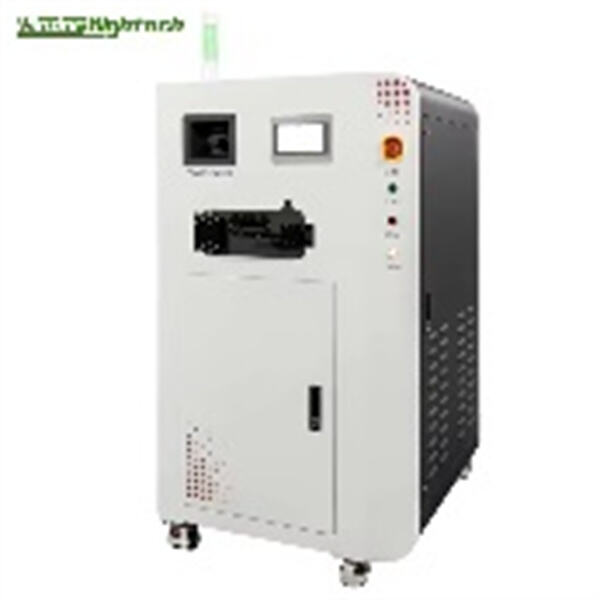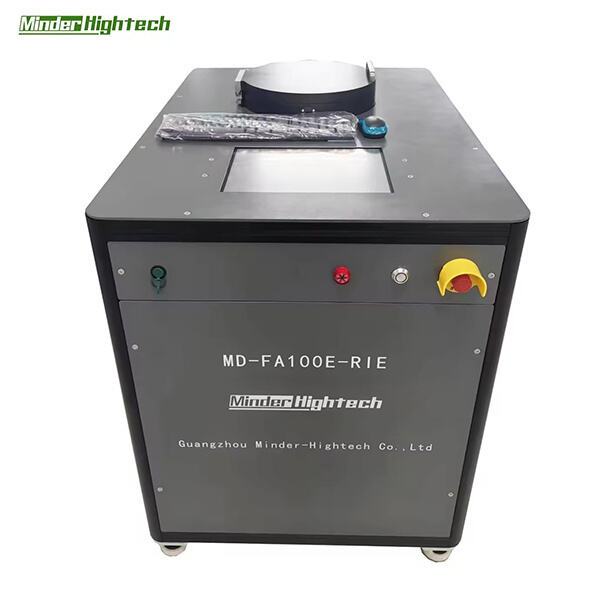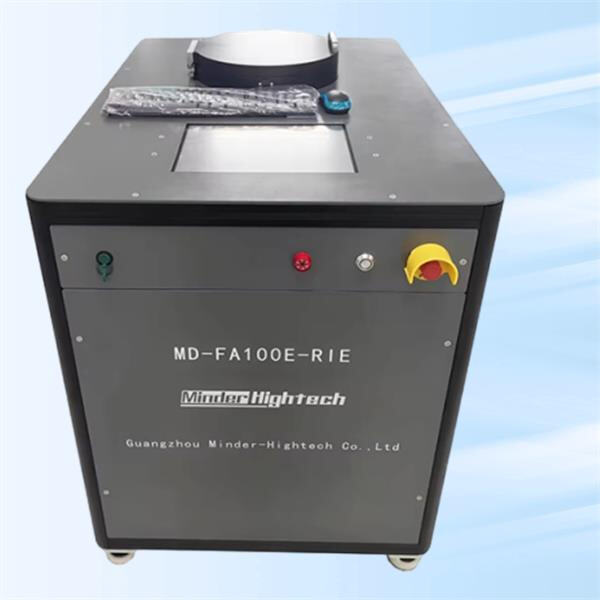Რეაქტიული იონური გამრავლება გამოიყენება საკუთარ ტერმინად, მაგრამ რეალიტეტში ეს არის მეთოდი, რომელსაც ხალხი იყენებს ტექნოლოგიის პარტიალური ნაწილების დაკლადებისთვის ბრუნჩ-ზომისამდე. ეти მცირე ნაწილები არის ძველი ინგრედიენტები რამდენიმე მოწყობილობაში, რომლებსაც ყოველდღე ვიყენებთ, მაგალითად: სმარტფონებს, კომპიუტერებს და ა. ეს პროცესის მთავარი ფუნქცია არის მასალის ნაწილების ამოღება, რათა შექმნათ მცირე და ზუსტი ნაწილები. ამ სტატიაში ვინახავთ რა არის რეაქტიული იონური გამრავლება - მისი დადებითი და უარყოფითი მხარეები RIE-ს გამოყენებისას სხვა მეთოდების შედარებით პლაზმურ-ქიმიური გამოსახანად; პლაზმური ქიმიის როლი ამ პროცესში; როგორ შეძლებთ მაღალი ხარისხის შედეგების მიღება RIE აპარატურის სწორ გამოყენებით, და საბოლოოდ, რომელ ტექნოლოგიურ იнструმენტის როლს ასრულებს.
Რეაქტიური იონური გამოჭრვა საკმარისი მეთოდია, რომელიც ჩამოიწერის მცირე იონებით და გაზით, რათა გამოჭრავს მასალის ნაწილები. წარმოიდგინეთ ეს როგორც მაღალძალა Gaussian სპრეი, რომელიც არჩეული ადგილის მასალას გამოაჭრის ზუსტ ფორმის შესახებ. იონები გამოიყენება მასალის ზედაპირზე და ისინი რეაქცია ხდება მასალასთან, რაც მიიღება მცირე ნაწილები, რომლებიც შეიძლება გამოიჭროს. მასალა ჩაიტანება საკუთარ ტიპის ყუთში, რომელიც სრულიად დახურულია და ჰაერის გარეშეა, რაც ეწოდება ვაკუუმურ კამერას. ეს მცირე ნაწილები წარმოიქმნენ რადიო სიხშირის ენერგიით, სადაც ისინი იქმნებიან იონებს.
Რეაქტიური იონური გამრავლება ერთ-ერთი საუკეთესო არის, როცა სახელმძღვანელოდ შესახებ იქნება. ეს ნიშნავს, რომ ის შეიძლება წარმოიდგინოს მაღალ პრეციზიონის კუთხის და მრუდი ელემენტები, მაგრამ ეს გაკეთებულია აირის საშუალებით, არა კი თევზების გამოყენებით. ეს ნიშნავს, რომ ელემენტები, რომლებიც შექმნილია ამ მეთოდით, ლიტერალურად შესაბამისია ტექნოლოგიაში [1]. ასევე, ეს ერთ-ერთი ყველაზე სწრაფი პროცესია; მეტი ნაწილი შეიძლება წარმოიდგინოს მოკლე პერიოდში. რადგან ეს პროცესი ასე სწრაფია, ის შეიძლება საკმარისი ეფექტური იყოს კომპანიებისთვის, რომლებსაც დიდი მოთხოვნა აქვს კონკრეტული ნაწილის შესახებ.
Მაგრამ რეაქტიური იონური გამრავლებას აქვს პრობლემებიც. ის არ არის შესაბამისი ყველა ტიპის მასალებისთვის, რადგან ზოგიერთი მასალა არ შეძლებს ამ ლაზერულ გაჭრებას. ასევე, საჭიროა შესაბამისი ტემპერატურები და წნევები ადგილზე. სწორი პირობები ასევე უნდა იყოს არსებითი, წინააღმდეგ შემთხვევაში ახალი პროცესი შეიძლება არ წარმატებოს საკმარისად კარგად. ერთმანეთი მხოლოდ ფინანსური აღწერა არის იმის მიმართული, რომ ეს შეიძლება ღარიბად იყოს სხვა გაჭრივების პრაქტიკების მიმართულებაზე შედარებით, რაც შეიძლება განახლების მიზნით გადაწყვეტილი იყოს ზედაპირის ჩამოკიდების გამო.

Გარკვეული ადგილი საბოლოო იონური ეტჩინგის პროცესში უკავშირდება პლაზმის ქიმიასთან. ეს იონები, რომლებიც წარმოიდგენენ პლაზმა, მიიღებენ მასალის ქიმიურ მიმართვების გადაჭრას, რაც მიიღებს გაჭრის. როგორც მიმართვები გადაიჭრება, მასალა დეინტეგრირდება მცირე ნაწილაკებად, რომლებიც შემდეგ გაფრინდება აირის მარაგით. რაც წარმოიქმნება ქიმიურ реакციაში, შეიძლება განაპირობოს გამოყენებული აირის ტიპით. მაგალითად, აზოტის აირი შეიძლება მიწოდოს ნაკლები ეტჩინგი, რომელიც აძლევს მასალის ამაღლებას გარემოში უნდავის ნაშრომების გარეშე, ხოლო ჰაერის გამოყენებით განსხვავებული ტიპის ეტჩინგი მიიღება, რაც შეიძლება განსაზღვრული მოთხოვნების მიხედვით განსაზღვრული შედეგის მისაღებად იყოს.

Ძალიან მნიშვნელოვანია დიდი პროცესული კონტროლი, რათა მიიღო კარგი რезультატი რეაქტიულ იონურ ეტჩინგზე. ეს მოითხოვს ბევრი პარამეტრის გაზომვას, მათ შორის ტემპერატურა, წნევა, გაზის ფლუქსი და იონური ენერგიები. მัგალითად, მუდმივი გარემო წვდომადია ეტჩინგის ხაზზე ერთმანეთს ერთსა და იმავე რეზულტატებს. თუ ერთ-ერთი ცვლილება არ არის ეფექტივულად კონტროლირებული, ეს შეიძლება გავლენა იყოს საბოლოო პროდუქტზე. გარდა ამას, მასალის გასუფთავება და მიერთება სწორად არის საჭირო ეტჩინგის დაწყების წინ. თუ ყველა დრო გადაიტანება მასალის მიერთებაზე, რათა ის ეტჩინგისთვის მზად იყოს, ეს უნდა გამოვიდეს უკეთესი შედეგები.

Მაგალითად, რეაქტიური იონური ეტჩინგი, რომელიც ხშირად იყენებენ მიკროფაბრიკაციის ინდუსტრიაში ძალიან მცირე ელემენტების შესამზადებლად განსხვავებულ ტექნოლოგიურ გადაწყვეტილებისთვის. ერთ-ერთი იმ რამდენიმესთანაც, რაც გრაფენი გამოიყენება, არის ძალიან მცირე ელექტრონული წირები, სენსორები და მიკროფლუიდული მოწყობილობების შესამზადებლად, რომლებიც არის ძველი მოდერნული ტექნოლოგიისთვის. ამასთანავე იგი გამოიყენება მიკროელექტრომექანიკური სისტემების (MEMS) შესამზადებლად, რომლებიც არის მცირე მოწყობილობები, რომლებიც სინამდე ხედავს, გამოისმენენ, გარკვეული გამოცდილები და მოძრაობენ მოლეკულების ერთ-ერთს დროს. ეს MEMS-ები გამოიყენება ბევრ აპლიკაციაში: მობილური ტელეფონების მცირე მოწყობილობებიდან და დიდი ინსტრუმენტებმდე, და ასევე მედიცინურ აღჭურვილობებში. ამ პროცესების შორის, რეაქტიური იონური ეტჩინგი თამაშობს კრიტიკულ როლს, რადგან ის შეიძლება შექმნას ძალიან მცირე და ზუსტი ატრიბუტები, რომლებიც საჭიროა ასეთი უმეტეს ტექნოლოგიებისთვის.
Copyright © Guangzhou Minder-Hightech Co.,Ltd. All Rights Reserved